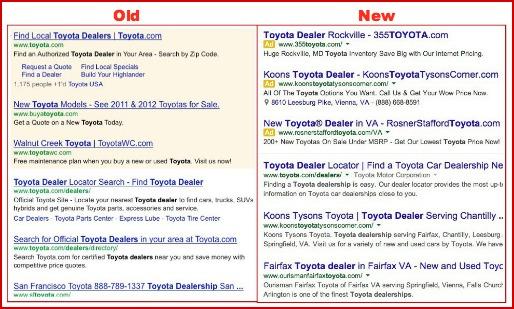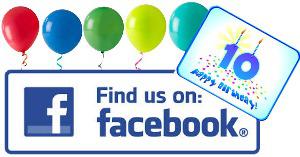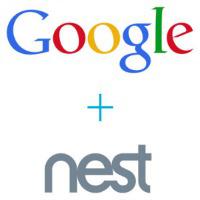BlogSunday, April 06 2014
In March, Google made a number of changes to its search results layout. Jon Wiley, Lead Designer for Google Search, summarized the modifications in his Google+ post: We’ve increased the size of result titles, removed the underlines, and evened out all the line heights. This improves readability and creates an overall cleaner look. We’ve also brought over our new ad labels from mobile, making the multi-device experience more consistent. Previously, ads were placed over a shaded background and now, they are differentiated by a small yellow “Ad” button. People who cover industry news can’t seem to agree whether the new layout makes ads more obvious, or less obvious. Many believe the ads now blend in with organic search results and more people will click on them—an advantage, perhaps, for advertisers with well-structured PPC campaigns. Thursday, March 13 2014
WhatsApp is a cross-platform mobile messaging app which allows users to exchange messages without having to pay for SMS. Last month, Facebook CEO Mark Zuckerberg announced an agreement to buy WhatsApp for $16 billion—$4 billion in cash and $12 billion in Facebook shares. Much like Instagram (another startup acquired by Facebook), WhatsApp will operate independently within Facebook.
Click here to read the entire complaint. Wednesday, March 12 2014
The laptop freed us from the desktop computer. The smartphone and tablet took us mobile. If recent Google news (Google is Finally Getting Serious About Wearables) and popularity of SXSW conference sessions on the topic of wearable devices are any indicator, we’ll all soon be suited up with smartglasses, smartwatches and other tech devices.
Imagine the marketing opportunities when wearable technology becomes ubiquitous! Sunday, February 16 2014
Did you know that Pay-Per-Click Advertising can be targeted exclusively to people who have visited your website? These are people who have already demonstrated an interest in your products and services. Wednesday, February 12 2014
Who could have predicted that an online social network would change the world? Monday, February 10 2014
In January, Google paid 3.2 billion cash for Nest, a company that designs and manufactures sensor-driven, Wi-Fi-enabled, self-learning, programmable thermostats and smoke detectors. Thursday, January 16 2014
In an August 2013 interview, Pinterest CEO Ben Silbermann said, “The big-picture assumption of the company is that there is a direct link between the things you pin and the things that you eventually spend money on. In there, we think, lies a model where we can actually make Pinterest more useful. And we can help businesses by bringing in more customers and helping them sell things and connect with people.” Tuesday, January 14 2014
A study by J.D. Power discovered that in 2012, 47 percent of vehicle owners indicated they used a downloaded app on their smart device for navigation in their car or truck, compared with 37 percent in 2011. Notably, 46 percent of owners indicate they "definitely would not" or "probably would not" repurchase a factory-installed navigation system if their smartphone navigation could be displayed on a central screen in their car. Who wants to pay for an old style navigation system when we have smartphones with free map service? And a pricey built-in DVD package when we have hand-held devices to keep passengers (i.e., whining kids) occupied during car trips? Car manufacturers are on the losing end of these advances in technology; they've seen the future and they want a piece of it. In June 2012, BMW, GM, Mercedes, Jaguar, Audi, Land Rover, Toyota, Chrysler and Honda coordinated with Apple to incorporate "eyes free" Siri-compatibility into their automobiles. Using a voice command button on the steering wheel, Siri Eyes Free enables the driver to make and receive calls, select and play music, audibly send and receive text messages, access Maps and get directions, audibly receive notifications, set reminders and more, all without looking away from the road. This month, Google, along with technology and auto industry leaders, announced the "Open Automotive Alliance" (OAA). The OAA is committed to bringing the Android platform to cars, with the goal of making technology in the car safer, more seamless and more intuitive for everyone. Jen-Hsun Huang, president and chief executive officer of NVIDIA said, "The car is the ultimate mobile computer. With onboard supercomputing chips, futuristic cars of our dreams will no longer be science fiction. The OAA will enable the car industry to bring these amazing cars to market faster.". The first cars with Android integration are expected to be delivered by the end of 2014. Friday, January 10 2014
In 2014, Content Marketing is still the key to a powerful SEO campaign and an active, engaging social media presence. The opportunities for content placement are increasing because online publishers will need to generate income! The banner ads on newspaper and magazine websites are not doing the job; the typical click-through rate is approximately.1 percent. (Source: DoubleClick). Online publishers, including such heavyweights as The New York Times, Buzzfeed and Vanity Fair, are hoping Native Advertising will boost click through rates and increase revenue. The objective of Native Advertising is to complement an article with helpful information from a paid sponsor. Like other forms of content marketing, native ads do not specifically market the sponsor's product or service. The expectation is that a reader will would like to engage with the sponsored content because, unlike a banner ad, a native ad contains information that is specific to the article that has already attracted the visitor's attention. While a small business probably can't afford a native ad placement on The New York Times website, there are affordable options-- 73 percent of online publishers and media companies offer some kind of native advertising program. (Source: eMarketer) Saturday, November 16 2013
Many companies use video to promote the brand, products and services. Some are taking it to the extreme, using pretty amazing cameras like the GoPro to demonstrate a product from the user’s point of view. |
|
|










